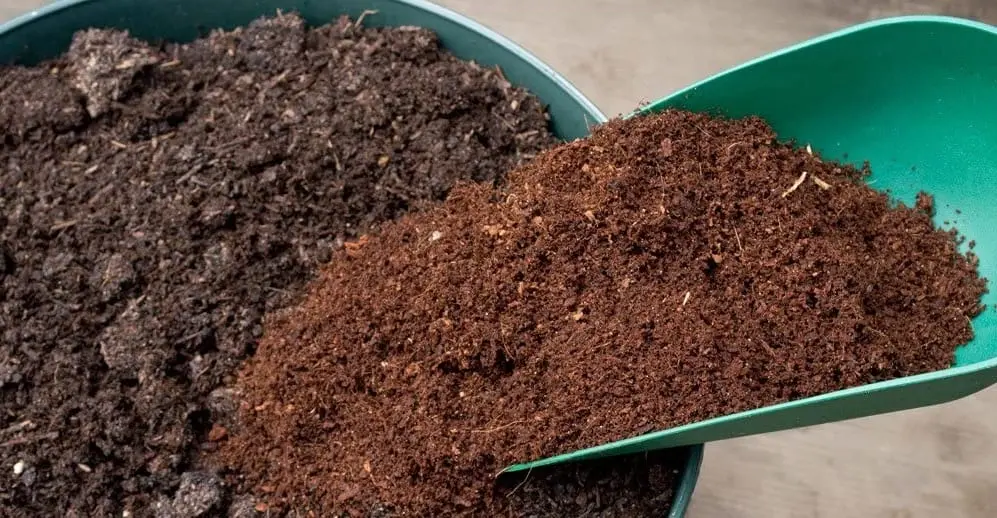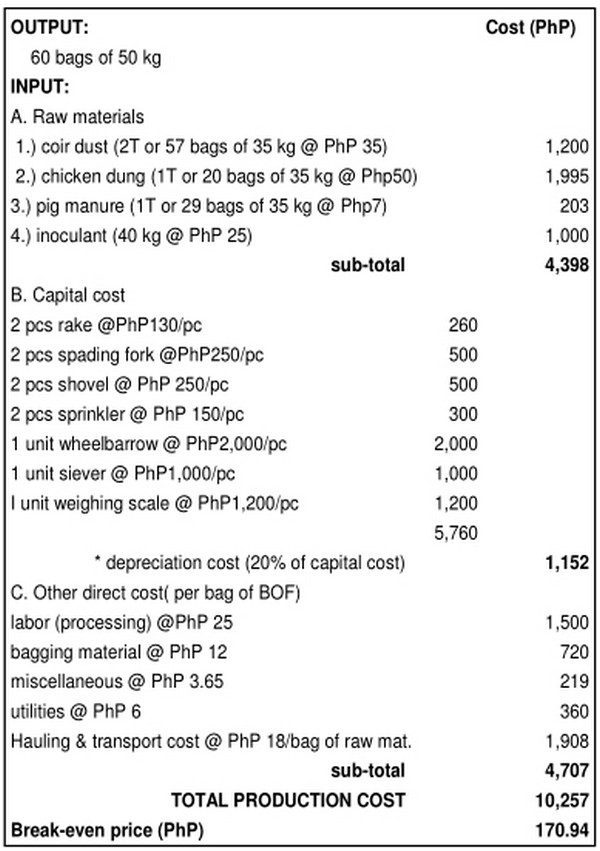In modern agriculture, sustainable and eco-friendly practices are gaining increasing importance. One such practice that’s making waves is the production of Bio-Organic Fertilizer (BOF) from coir dust and animal manure. BOF is a processed inoculated compost that speeds up the decomposition of organic materials, turning them into nutrient-rich fertilizer. This method has several advantages over traditional composting, offering farmers an efficient and environmentally friendly alternative.
Understanding Bio-organic Fertilizer
BOF is distinct from traditional composting because it relies on introducing homogeneous microbial inoculants to hasten the decomposition process. This approach significantly reduces the time required for decomposition from several months to just 3-4 weeks. The microbial inoculants, including beneficial microbes like Trichoderma harzianum and nitrogen-fixing bacteria like Azotobacter, play a pivotal role in breaking down organic materials, especially those high in lignin and cellulose, such as rice straw, coir dust, and bagasse.

Raw Materials and Preparation
You’ll need a mix of organic plant and animal residues to create high-quality BOF. The ratio of plant residue to animal manure can vary (1:1, 2:1, or 1:2), depending on the desired heap size and nutrient content. For a 4-ton heap at a 1:1 ratio, you’ll require:
- 2 tons of coir dust
- 1 ton of chicken manure
- 1 ton of swine manure
- 40 kg of inoculant (1% of the raw material’s weight)
Besides these raw materials, you’ll also need a few small tools and implements, such as rakes, shovels, spading forks, sprinklers or a water hose, plastic laminated sacks for covering, a wheelbarrow, a weighing scale, a siever (with a wire mesh size of ¼ inch), and protective wear (gloves, masks, hats, and boots).
The Production Process
I. Site Selection
Choosing the right site for composting is essential. Ideally, the site should be shaded, well-drained, and near a water source. However, open areas can also be used. A 4m x 6m area can accommodate composting 4 tons of agricultural waste.
II. Preparation of Raw Materials
Collect the required coir dust, chicken manure, and swine manure. Remove non-biodegradable materials like stones, plastics, and metals. Divide the coir dust into three parts.
III. Piling of Materials
- Spread 1/3 of the coir dust as the first layer and water it to about 60% moisture content.
- Apply the required amount of inoculant on top (0.5% of the material’s weight).
- Spread chicken manure evenly on top and water it.
- Repeat steps 1 and 2 using swine manure.
- As the topmost layer, spread coir dust evenly without inoculating; it serves as a buffer for odor.
- Cover the heap with a plastic sack to conserve moisture and prevent rainwater from entering. Incubate for 4-7 days.
IV. Mixing and Turning Over
After 4-7 days, turn and mix the materials thoroughly. If needed, add water during turning, and then return the cover. Repeat this process at weekly intervals.
V. Harvesting, Sieving, and Further Processing
After three to four weeks, the compost is ready. It should be dark brown to black, have no offensive smell, maintain an ambient temperature, and contain 35% moisture or less. Use a manual siever or mechanical sifter to refine the organic fertilizer. Inoculate the sifted material with 0.5% of the inoculant, store it for three days under shade, and then pack it in plastic-lined sacks. Do not store it directly on concrete flooring; instead, provide a wooden platform and stack the sacks, but no more than ten high. Store the fertilizer for up to six months in an aerated but dry area.
Quality Control Measures
For high-quality BOF, certain points must be observed:
- Separate dry materials from wet ones.
- Monitor the heap’s temperature, which should reach over 40°C within 24 hours of heaping. During the first week, aim for a temperature between 40-50°C. If the desired temperature is not reached, check for excess moisture in the materials and adjust as needed.
- A pure organic fertilizer must have 5-7% total NPK with at least 1.5% nitrogen (N) and 10% carbon. It should also contain 10% or more organic matter and neutral to slightly alkaline pH.
Benefits of BOF Application
The application of BOF offers numerous benefits to both farmers and the environment:
- Increased Yield and Crop Quality: BOF enhances crop yields and improves produce quality.
- Improved Soil Structure: It enhances soil aeration and water-holding capacity, ultimately improving the soil’s chemical properties.
- Enhanced Soil Fertility: BOF corrects soil acidity and enriches it with trace nutrients, organic matter, and microorganisms.
- Restored Microbial Balance: It restores microbial balance in the soil, fostering healthier and more productive ecosystems.
How Much BOF to Apply
The rate of BOF application depends on the crop type. Recommendations range from 10-20 bags per hectare or 2-6 kg per tree for coconut-bearing plantation crops. Initially, it’s advised to combine this recommendation with 50% of the recommended rate of inorganic fertilizers for optimal results.
Advantages of the Technology
The production of BOF offers several notable advantages:
- Reduced Dependence on Inorganic Fertilizers: By using BOF, farmers can reduce their reliance on chemical fertilizers, promoting a more sustainable and environmentally friendly approach.
- Renewable and Locally Available Raw Materials: The raw materials for BOF are readily available and can be sourced locally, reducing transportation costs and environmental impact.
- Proper Waste Disposal: This technology aids in proper waste disposal by converting agricultural residues and animal manure into valuable fertilizers.
- Employment Opportunities: BOF production can create employment opportunities in rural areas, contributing to economic development.
- Contribution to Biodiversity: BOF enriches the soil with organic matter and microorganisms, helping to support biodiversity in agricultural ecosystems.
- Less Environmental Pollution: Reduced use of chemical fertilizers decreases the environmental pollution associated with their production and application.
Production Economics
The economics of BOF production involve several assumptions, including a 75% recovery rate and an operation time of 30 days for processing 4 tons of raw materials. The specifics of the financial aspects may vary depending on local factors, but BOF production offers long-term sustainability and benefits for farmers and the environment.

In conclusion, Bio-organic fertilizers derived from coir dust and animal manure are sustainable and eco-friendly solutions for modern agriculture. Its production process is straightforward, the benefits are substantial, and it offers a promising alternative to traditional chemical fertilizers.
See Also:
- Black Tiger Prawn Farming New Techniques
- Analyzing the Income-Generating Potential of Beekeeping
- The Rabbitry Revolution: Gigi Morris’ Journey from Fine Dining to Farming in Batangas
- 9 Health Benefits of Tawilis, Description, and Side Effects
- Health Benefits of Janitor Fish, Description, and Disadvantages
